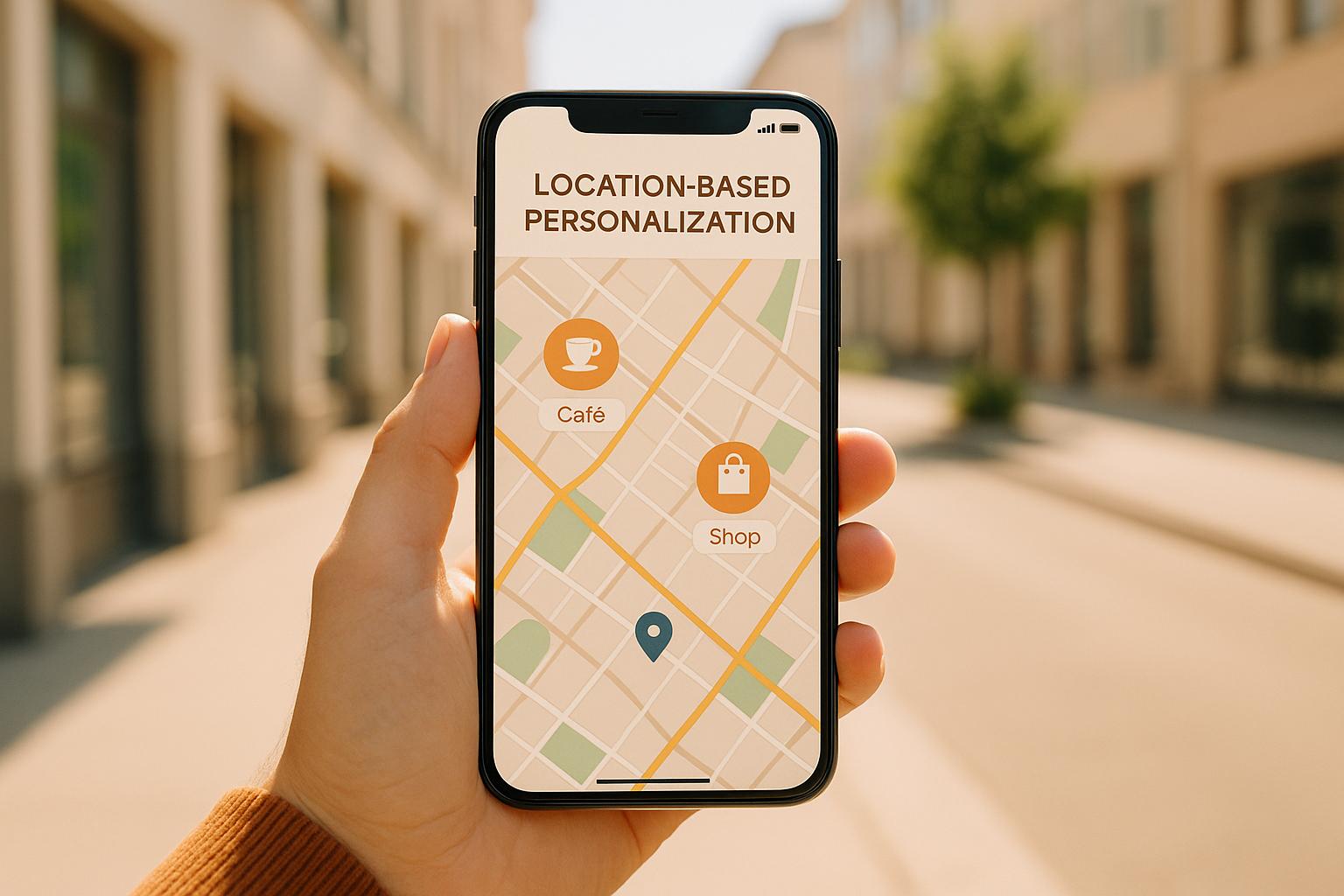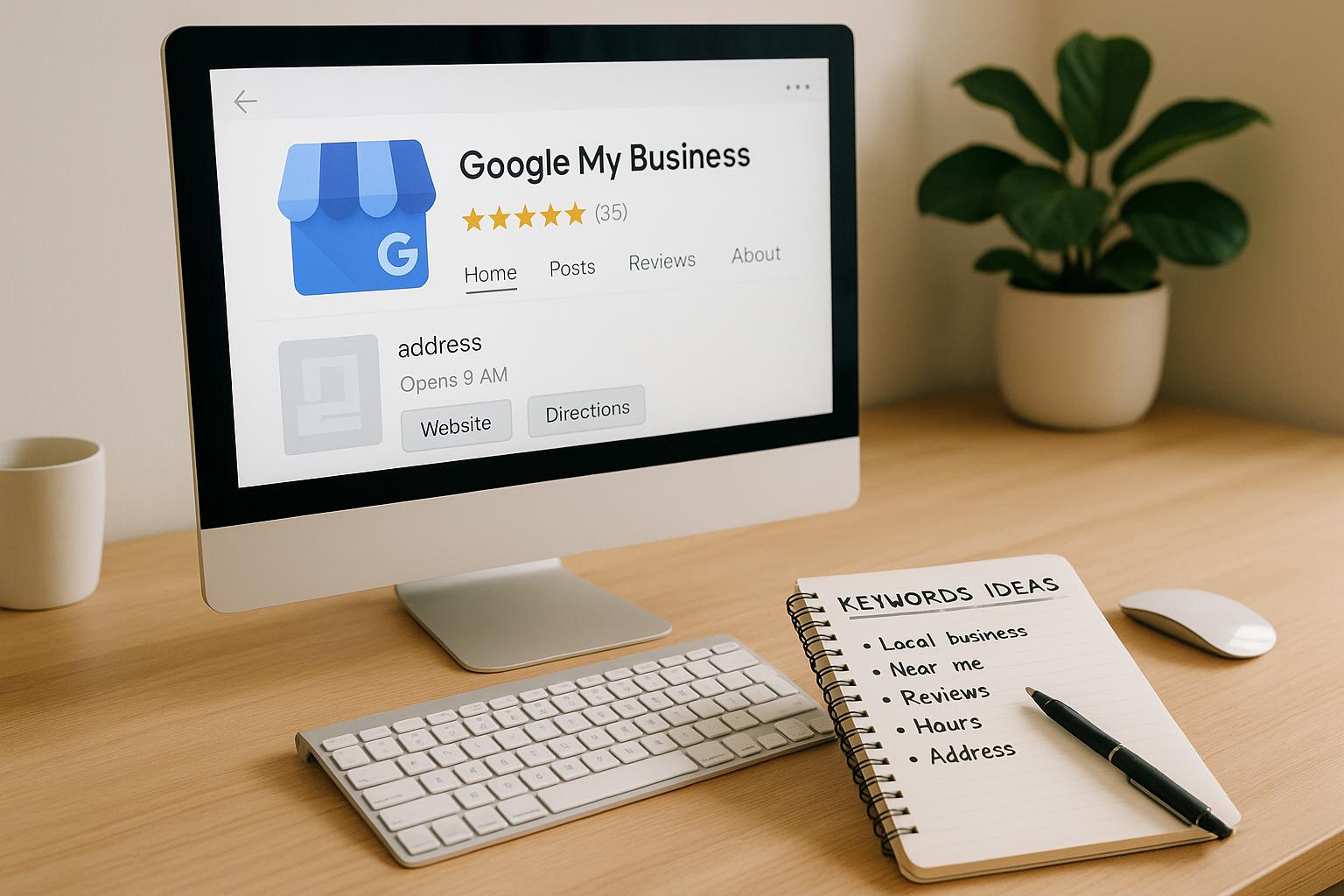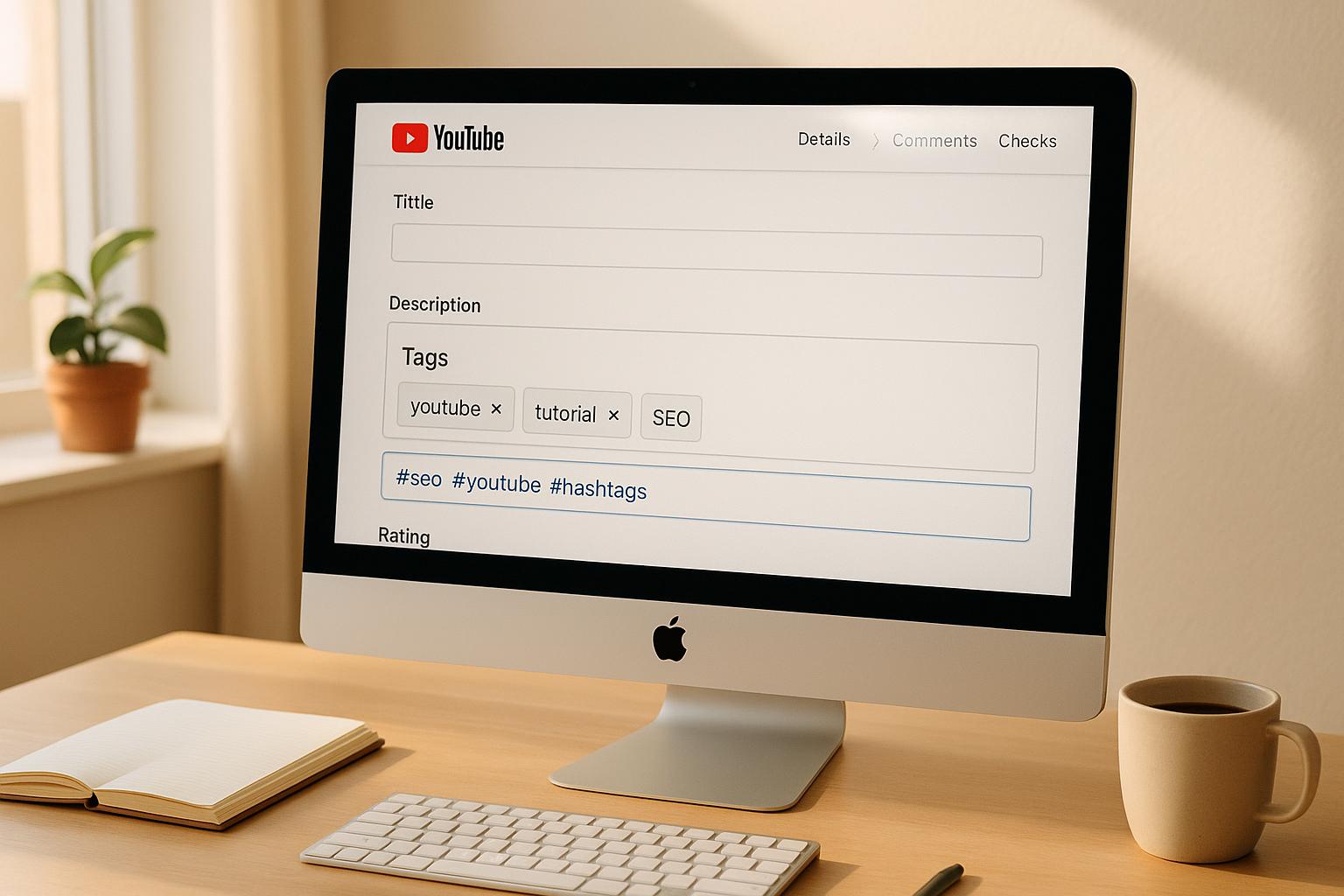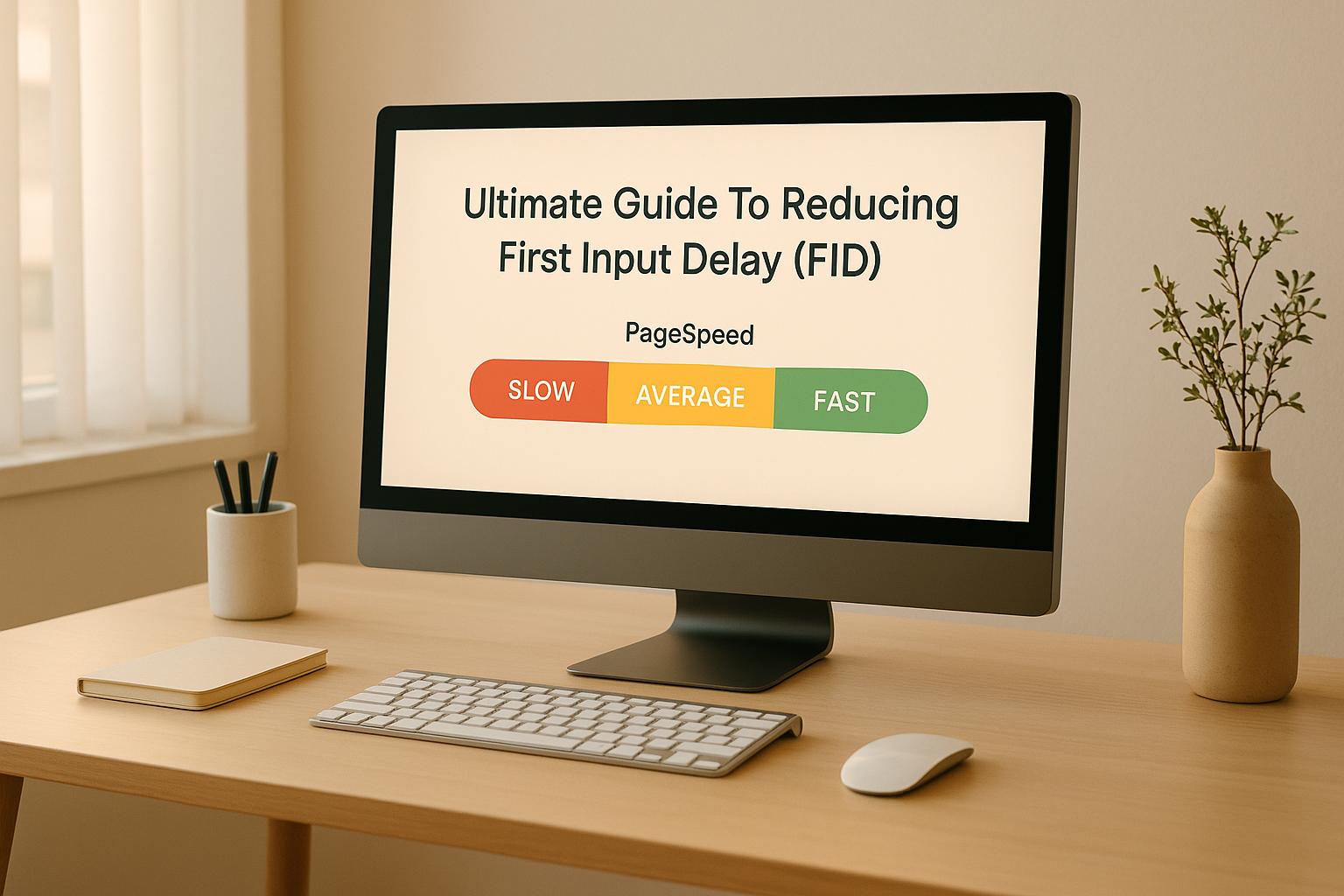Ultimate Guide to Location-Based Personalization
September 22, 2025Location-based personalization tailors content, offers, and experiences using geographic data to make interactions more relevant. It’s widely used by businesses in the US to improve customer engagement and boost sales.
Key Highlights:
- What It Is: Personalization based on real-time location data, down to neighborhoods or specific buildings.
- Why It Matters: US consumers expect relevant, timely experiences. Examples include weather-based ads or region-specific offers.
- How It’s Done: Tools like GPS, IP geolocation, Wi-Fi beacons, and cell tower triangulation collect location data.
- Core Strategies:
- Push notifications and SMS for nearby deals.
- Dynamic landing pages showing localized content.
- Geotargeted ads tailored to specific regions or audiences.
- Tools: Platforms like Google Ads, Salesforce, and Mailchimp help implement campaigns effectively.
- Compliance: Follow US privacy laws (e.g., CCPA) by obtaining consent, being transparent, and securing data.
This guide explains how businesses can use location data to create personalized experiences while maintaining customer trust.
How Does Location Personalization Work In Advertising? - SearchEnginesHub.com
Core Strategies for Location-Based Personalization
Using location data effectively can help businesses deliver messages that resonate with their audience. Below are three strategies that have consistently proven successful for businesses in the U.S.
Personalized Messaging
Push notifications are a direct way to connect with customers based on their location. For example, a restaurant might send a lunch special to users within a 5-mile radius between 11:00 AM and 1:00 PM. Retailers often rely on geofencing to send alerts as customers approach their stores.
Weather-based messaging is another powerful tool. Imagine a clothing store promoting winter coats to customers in areas where temperatures drop below 40°F, while advertising swimwear to those in warmer climates. These messages feel seamless because they align with what customers are already experiencing.
SMS campaigns often outperform push notifications, especially for location-specific offers. Text messages have high open rates and can create a sense of urgency. For instance, a coffee shop might send a special discount to customers nearby who haven’t visited recently, encouraging them to stop by.
Email personalization can go beyond addressing customers by name or city. Businesses can segment their email lists by ZIP code to promote local events, store openings, or relevant products. A home improvement store might send hurricane prep tips to Florida residents during storm season, while promoting snow removal tools to customers in the Northeast. These messages address immediate needs and provide value tailored to the customer’s location.
Dynamic Landing Pages
Your website should also reflect local relevance. Region-specific landing pages can highlight content, offers, and products that cater to local needs, rather than relying on generic messaging.
For example, a home services company might emphasize snow removal for visitors from northern states, while showcasing lawn care or pest control services to those in warmer regions. Including local testimonials and case studies from the visitor’s area can build trust more effectively than broad, nationwide reviews.
Adding features like store locators and local pricing can bridge the gap between online browsing and in-store shopping. Retailers often include messages like "Available at your local store" alongside pickup times and directions to drive conversions.
Weather-responsive content can elevate dynamic landing pages even further. An outdoor gear retailer might spotlight rain jackets for visitors from Seattle during the rainy season, while showing hiking boots to users in Arizona. This creates a browsing experience that feels timely and relevant.
Technically, this involves using IP geolocation or GPS (with the user’s permission) to detect the visitor’s location and serve tailored content. The result? A website experience that feels personalized to each visitor’s unique needs.
Geotargeted Advertising
Targeted ads are another effective way to reach local customers. With Google Ads location targeting, businesses can focus their ad spend on specific geographic areas where they operate. This includes targeting by country, state, city, or even custom-drawn areas. For example, a local plumber might target a 15-mile radius around their service area, while a national retailer might exclude regions without nearby stores.
ZIP code targeting allows for even more precision. A luxury car dealership could target ZIP codes with higher average incomes, while a discount grocery chain might focus on areas with budget-conscious shoppers. This ensures that ads reach the right audience.
Platforms like Facebook and Instagram offer additional options, such as targeting people who live in a specific area versus those just visiting. A tourist attraction might focus on visitors, while a local gym targets residents. Businesses can also use lookalike audiences based on location to find new customers who share traits with their current local audience.
Radius targeting is especially useful for businesses with physical locations. For instance, a restaurant might target people within a 10-mile radius during lunch hours, increasing the chances that someone nearby will visit. The radius can be adjusted based on factors like population density and competition.
Timing matters too. Location-based ad scheduling ensures ads run when people are most likely to act. A breakfast spot might run ads from 6:00 AM to 10:00 AM within a 5-mile radius, while a bar focuses on happy hour promotions in the early evening.
Some businesses even target areas near competitors, offering special incentives to draw in local customers. However, this approach requires careful execution to avoid appearing overly aggressive.
The best geotargeted campaigns combine location data with other criteria like demographics, interests, and behavior. This creates highly focused ads that reach the right audience in the right place at the right time, maximizing both relevance and return on investment.
Tools and Technologies for Location-Based Personalization
A strong set of tools is essential for making location-based personalization work effectively. The right platforms can provide accurate, real-time location insights to help businesses tailor their strategies.
Key Platforms and Features
Google Ads offers tools like location extensions and radius targeting to ensure ads reach the right audience. Its Smart Bidding feature adjusts bids based on location performance, helping businesses maximize conversions.
The Google My Business API keeps ads updated with real-time store details, such as hours, inventory, and promotions, ensuring customers always see accurate local information.
Facebook's geotargeting allows businesses to distinguish between residents and visitors, making local targeting more precise. With its Custom Audiences feature, businesses can upload customer addresses and create lookalike audiences in specific areas.
Instagram's location tools complement Facebook's targeting capabilities while adding a visual element. Features like location tags, geofenced Stories ads, and Shopping Tags allow businesses to connect with local audiences and highlight products available nearby.
Salesforce Marketing Cloud offers enterprise-level personalization through its Journey Builder tool. This platform automates email campaigns triggered by factors like customer proximity, weather, or local events, while tracking engagement across multiple channels.
Adobe Experience Platform uses AI to analyze location trends and predict customer behavior. Its Real-Time Customer Data Platform combines location data with demographic and behavioral insights to create highly targeted campaigns.
Mailchimp integrates geolocation data into email campaigns, adding local weather updates and store details. This capability makes personalized email marketing accessible for smaller businesses, even with limited customer data.
Integrating CRM and Data Platforms
To make the most of location-based personalization, integrating a Customer Relationship Management (CRM) system is vital. CRMs like HubSpot and Pipedrive automatically gather location data from customer interactions, building detailed profiles based on behavior and geography.
Salesforce CRM takes this further with Einstein AI, which analyzes location data to identify patterns and predict customer needs. For example, if a customer moves from one area to another, the system can suggest the nearest store or relevant services.
Customer Data Platforms (CDPs) like Segment and Tealium unify location data from various sources, such as website analytics, email engagement, and purchase history, to create a seamless customer journey.
Microsoft Dynamics 365 offers advanced location tracking through its Customer Insights module. It analyzes foot traffic, connects online behavior with store visits, and identifies the best touchpoints for different regions. With Power BI, businesses can view visual dashboards showing real-time campaign performance by location.
API integrations ensure location data stays consistent across platforms. For instance, when a customer updates their address in the CRM, this change automatically syncs with email marketing tools, ad platforms, and other systems.
Data enrichment services like Clearbit and ZoomInfo add extra layers of location data, such as local demographics or economic indicators, to customer profiles. This helps businesses refine their personalization strategies even further.
SEO Werkz's Expertise in Location-Based Campaigns
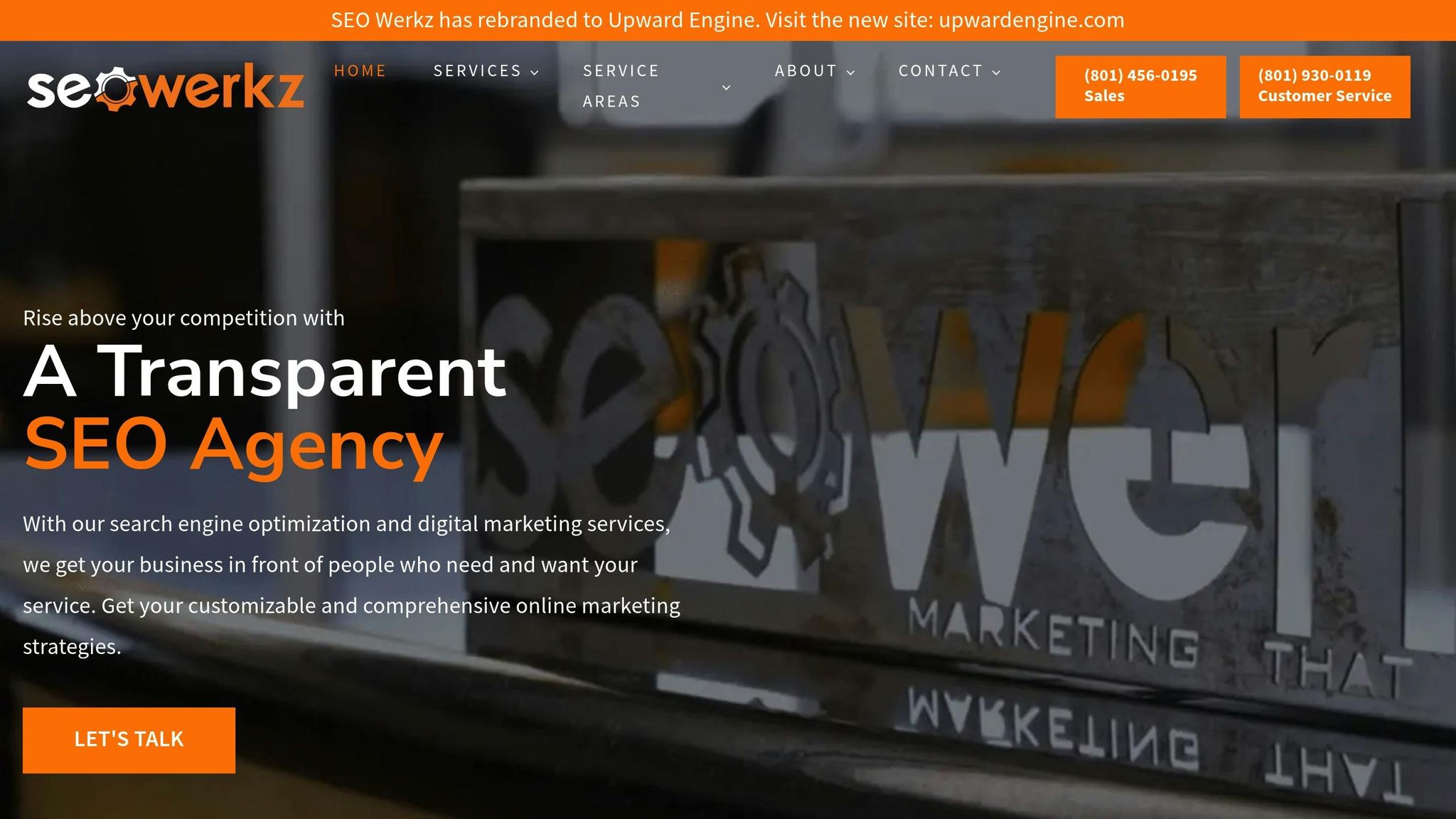
SEO Werkz specializes in location-based personalization, using tools and strategies to help businesses connect with local audiences. Their paid search (PPC) services focus on geographic targeting, optimizing ad spend to boost local conversions. They combine traditional location targeting with audience segmentation based on local behaviors.
Their web design and development team creates location-aware websites that adapt to visitor locations. These sites include dynamic landing pages showcasing local inventory, store promotions, and region-specific testimonials. By using IP geolocation and GPS integration, they ensure a smooth user experience across all devices.
SEO Werkz also develops location-specific content strategies to improve search rankings and user engagement. These include city-specific landing pages, articles covering local events, and blog posts that balance local relevance with brand messaging.
Their retargeting marketing services excel in showing ads for nearby stores, promoting local events, and building custom audiences based on geographic behaviors. In addition, their social media marketing campaigns focus on geo-specific content, such as local events and regional success stories.
The agency also offers reputation management services, monitoring and responding to location-specific reviews. They manage multiple Google My Business profiles and ensure accurate location details across online directories.
Finally, SEO Werkz provides detailed monthly reports that break down campaign performance by location. These reports include insights on local search rankings, geo-targeted ad performance, and regional conversion rates, helping businesses identify their most valuable markets.
sbb-itb-cef5bf6
Best Practices and Compliance in the US
When it comes to location-based campaigns, success hinges on a mix of thoughtful planning, compliance with legal standards, and an understanding of local nuances. By following these best practices, you can create campaigns that not only engage your audience but also build their trust.
Step-by-Step Campaign Implementation
Start by setting specific, measurable goals. For example, aim to increase store visits by 25% in targeted ZIP codes within three months. Then, review and clean your location data from all channels to ensure accuracy, and choose a technology stack that aligns with your budget and campaign needs.
Next, develop location-specific content that resonates with your audience. This might include landing pages tailored to regional interests or product recommendations based on local weather conditions.
To track performance, implement robust tracking and attribution methods. Use UTM parameters for online campaigns and unique promo codes for offline conversions. This helps you pinpoint which areas generate the best returns.
Before launching nationwide, test your campaign in a few select markets. Choose 2-3 locations that represent your broader audience and monitor key metrics over time. Use these insights to refine your approach before expanding.
Finally, optimize your campaigns based on performance data. Adjust targeting, tweak messaging, and shift budgets to areas that deliver the best results. Regular weekly reviews can help you stay ahead of any issues and capitalize on opportunities.
As you build out your campaigns, remember to align all practices with US legal standards to avoid compliance pitfalls.
Compliance with US Privacy Laws
Operating within the US means navigating a complex landscape of privacy laws, particularly around location data. Here’s how to stay compliant:
- Understand federal and state laws: The Federal Trade Commission (FTC) requires transparency when collecting personal data, including location information. States like California (CCPA) and Virginia (VCDPA) impose even stricter rules, so be sure to familiarize yourself with their requirements.
- Obtain explicit consent: Use clear opt-in forms for location tracking, especially in mobile apps. Avoid pre-checked boxes and explain how the data will be used and shared.
- Offer transparent privacy policies: Clearly outline how you collect, store, and use location data. Use plain language, and update your policies whenever your practices change.
- Enable easy opt-outs: Include clear unsubscribe links in emails and offer app settings to disable location tracking. Process opt-out requests promptly - ideally within 48 hours.
- Secure location data: Protect data with encryption both in transit and at rest. Limit access to those who need it and conduct regular security audits to address vulnerabilities.
- Maintain data accuracy: Allow customers to update or correct their location information. Outdated data can lead to irrelevant targeting, which frustrates users. Automated systems can help flag inaccuracies.
- Document compliance efforts: Keep detailed records of your policies, training, and audits. This documentation can be invaluable if regulators or customers raise concerns.
Adapting Messaging for US Audiences
To truly connect with US audiences, your messaging needs to reflect local preferences and conventions. Here’s how to make your communications resonate:
- Localize your content: Use US standards for currency ($), date formats (MM/DD/YYYY), measurements (imperial), and temperature (°F). These small details make your messaging feel familiar and relevant.
- Tailor language to regional preferences: Different areas of the US have distinct communication styles. For instance, Southern audiences might appreciate more formal and polite language, while West Coast customers often prefer a casual tone. Avoid slang that might not translate well across regions.
- Add regional context: Reference local landmarks, sports teams, or events to create a sense of connection with your audience.
- Time messages appropriately: Schedule messages based on the recipient’s time zone. A breakfast promotion should arrive at 7:00 AM local time, whether your audience is in New York or California.
- Account for seasonal differences: Consider how weather varies across regions. While Arizona customers might be shopping for air conditioners in March, Minnesota residents are still dealing with winter gear. Align your product recommendations and promotions with these seasonal patterns.
- Embrace diversity: Avoid making assumptions based solely on location. Instead, combine geographic data with behavioral insights for more nuanced personalization.
- Test and refine messaging: A/B test different elements like subject lines, calls-to-action, and offers to see what works best in each area. Urban and rural audiences, for example, often respond differently to the same campaign.
- Stay aware of local events: Monitor news and events in your target areas to avoid sending inappropriate messages. For instance, steer clear of promotional content during local emergencies. Tools like Google Alerts can help you stay informed.
Case Studies and Real-World Applications
Location-based personalization is reshaping how businesses in the US connect with their customers. The following examples and comparisons highlight how companies are using geographic data to create more meaningful interactions and boost customer engagement.
Success Stories from US-Based Brands
Several US brands have effectively woven location-based personalization into their strategies, achieving impressive results:
- Starbucks enhances its mobile ordering experience by using location data to identify nearby stores and send timely notifications. The app also adjusts menu recommendations based on local preferences and weather conditions, encouraging higher engagement.
- Target rolled out its "Drive Up" service with the help of geofencing technology, which detects when customers are near a store. This feature not only streamlines pickups but also allows for customized promotional offers based on local inventory and customer demographics.
- McDonald's integrates real-time location data into its mobile app to display the nearest restaurant, estimated travel times, and available services. The app also offers location-specific deals and delivery options, improving both in-store and digital experiences.
These examples showcase how businesses across different industries are tapping into location data to enhance customer interactions, both online and offline.
Industry-Specific Applications
Location-based personalization is proving useful across a variety of industries, bridging the gap between digital and physical experiences:
- In retail, beacon technology sends in-store notifications and shows real-time local product availability, creating a more personalized shopping experience.
- In food service, GPS tracking helps optimize delivery logistics and staffing by analyzing local demand patterns.
- In entertainment and hospitality, venues and booking platforms use location data to offer tailored promotions and personalized search results, leading to more engaging customer experiences and higher conversion rates.
Comparison of Personalization Strategies
Each location-based personalization strategy comes with its own strengths and challenges. Here's a breakdown of some common approaches:
| Strategy | Best Use Cases | Typical Benefits | Implementation Complexity | Privacy Considerations |
|---|---|---|---|---|
| Push Notifications | Proximity alerts and time-sensitive offers | Drives immediate engagement and foot traffic | Low to Medium | Requires clear opt-in and transparent data use |
| Dynamic Landing Pages | Local retail and multi-store promotions | Displays locally relevant content, boosts conversions | Medium | Relies on IP data with minimal privacy concerns |
| Geotargeted Ads | Localized promotions and awareness campaigns | Tailors messaging to specific audiences | Medium to High | Must comply with ad platform and privacy rules |
| Geofencing | Event marketing and in-store engagement | Encourages interactions near points-of-sale | High | Requires precise permissions; may impact battery life |
| Beacon Technology | In-store experiences and interactions | Enhances dwell time and drives additional sales | High | Needs app installation with clear data policies |
For example, push notifications are great for driving immediate action but must be used sparingly to avoid overwhelming users. Dynamic landing pages, while scalable, rely on less precise IP-based location data. Geotargeted ads work well for reaching specific local audiences, provided they are creatively executed. Geofencing and beacon technologies, though more complex, enable highly targeted in-store interactions.
Conclusion
Location-based personalization has become a key advantage for businesses in the United States. The strategies and examples shared here highlight how companies across various industries are leveraging geographic data to craft more meaningful customer experiences and achieve measurable outcomes.
To make the most of these strategies, it’s important to align them with your business objectives. Whether it’s geotargeted ads, advanced beacon technology, or dynamic landing pages, the right approach depends on your goals. For many businesses, dynamic landing pages are an easy entry point. For those looking to deepen engagement, tools like push notifications and geofencing present powerful opportunities.
Privacy is non-negotiable. With evolving US privacy laws and growing consumer awareness around data rights, transparent data practices are critical. Clear opt-in processes and ethical data collection build trust, which is crucial for long-term success. The best campaigns strike a balance between personalization and privacy, ensuring customer confidence isn’t compromised.
Advances in CRM systems, marketing platforms, and location data integration are making it easier than ever to deliver personalized experiences. These tools simplify the process, reinforcing the benefits of using advanced technology to enhance location-based strategies.
If you’re ready to dive into location-based personalization, start small. Focus on one or two strategies that fit your current capabilities and customer journey. As you see results, expand your efforts. The businesses thriving in this space are the ones that treat location-based personalization as a core element of their overall customer experience strategy - not just a one-off tactic.
And don’t stop there. Stay ahead by keeping an eye on emerging trends. The future belongs to businesses that seamlessly connect digital and physical experiences. Location-based personalization offers the tools to create those connections, delivering interactions that are not only timely and relevant but also mutually rewarding for both customers and businesses.
FAQs
How can businesses use location-based personalization while staying compliant with US privacy laws?
To comply with US privacy laws when using location-based personalization, businesses must focus on transparency and securing user consent. Always get clear and explicit permission before collecting or using geolocation data. Let users know exactly how their data will be used and give them the tools to access, delete, or limit the use of their location information. This is especially crucial under laws like the California Consumer Privacy Act (CCPA) and similar state-level regulations.
It’s also important to stay informed about the changing privacy laws across the country. With many states rolling out comprehensive privacy rules, regularly reviewing and updating your data practices is key. Not only does this help ensure compliance, but it also reinforces trust with your users.
What are the best tools for using location-based personalization in marketing campaigns?
To make the most of location-based personalization in your marketing efforts, explore tools that utilize geofencing, beacons, and mobile apps. For instance, platforms like Gimbal and GeoTargetly let you craft location-specific messages, boosting how well your audience connects with your content. Tools such as Foursquare and GroundTruth are also worth considering, as they focus on geolocation-based ad targeting to refine the accuracy of your campaigns.
These tools allow businesses to tailor content based on where users are, helping create marketing strategies that feel relevant and leave a stronger impression.
How can location-based personalization help businesses boost customer engagement and drive sales?
Location-based personalization allows businesses to connect with their audience by offering customized content, special offers, and recommendations based on where customers are located. This approach ensures that the information customers receive is both relevant and timely, creating a better overall experience and boosting engagement.
Leveraging location data can lead to increased click-through rates, more website traffic, and higher conversion rates. It also has the added benefit of encouraging visits to physical stores, building customer loyalty, and helping businesses differentiate themselves in competitive markets. In the end, this strategy contributes to stronger ROI and attracts more qualified leads.
